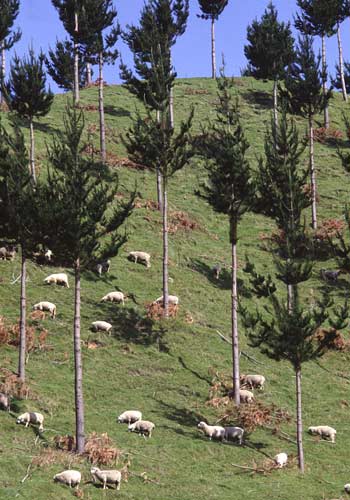
Agroforestry is the combined use of agriculture and forestry. Seedling trees are planted in pasture that is rested from grazing for about two years, until the trees grow out of reach of livestock. Grazing is then resumed and the trees are thinned to a density that allows ample sunlight for pasture growth, usually 100–200 trees per hectare. Trialled in the 1970s and 1980s, this method was promoted as an ideal means of gaining a long-term income, and improving stability on steep land. But it became less popular when it was found that the timber quality was lower than that of plantation forests, because the trees grew too rapidly on fertilised soil.





Tāpiritia te tākupu hou